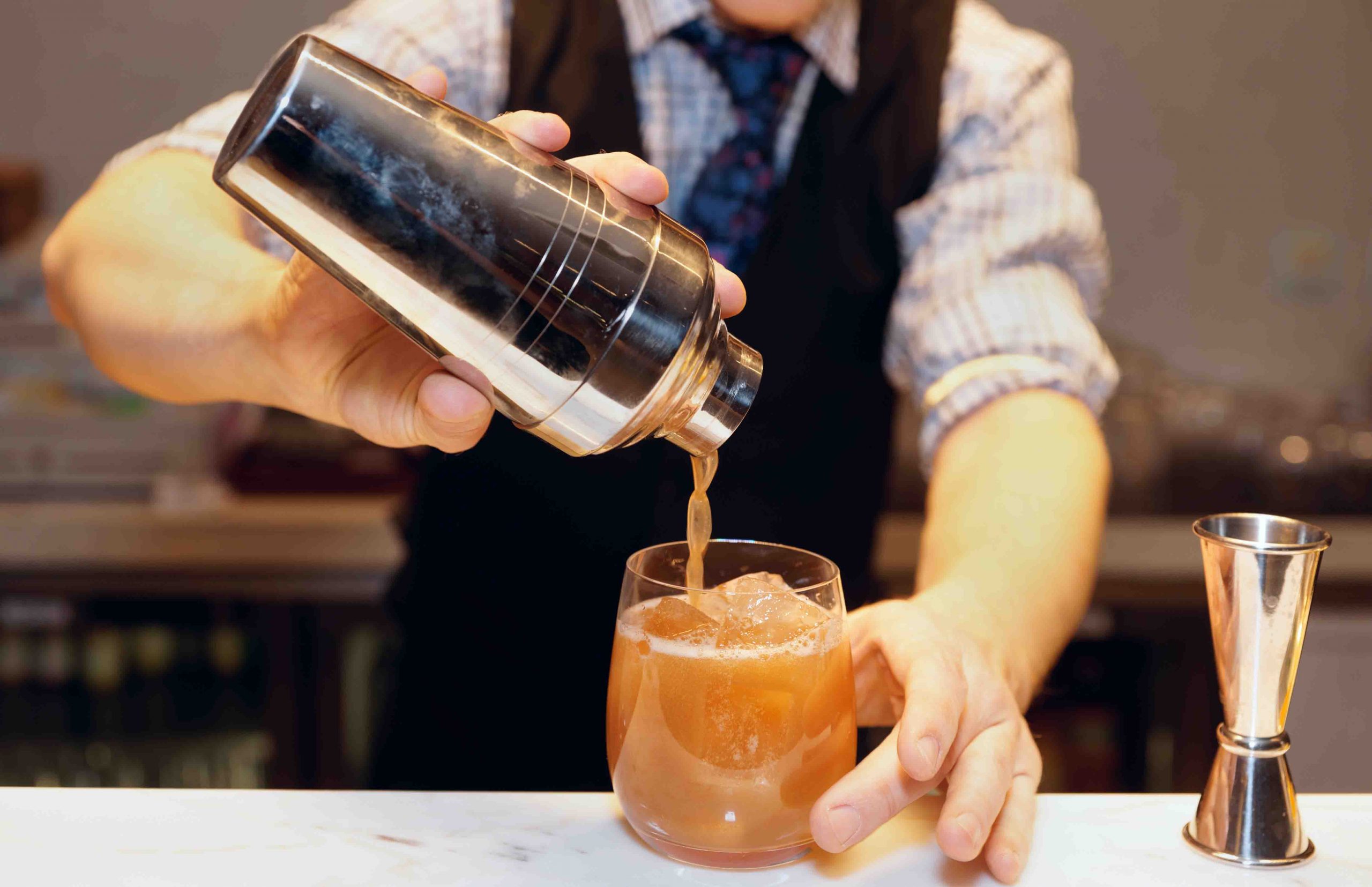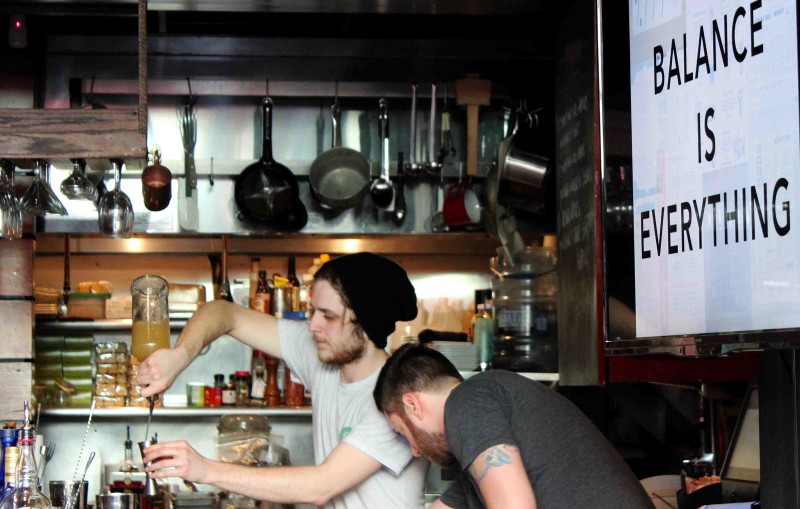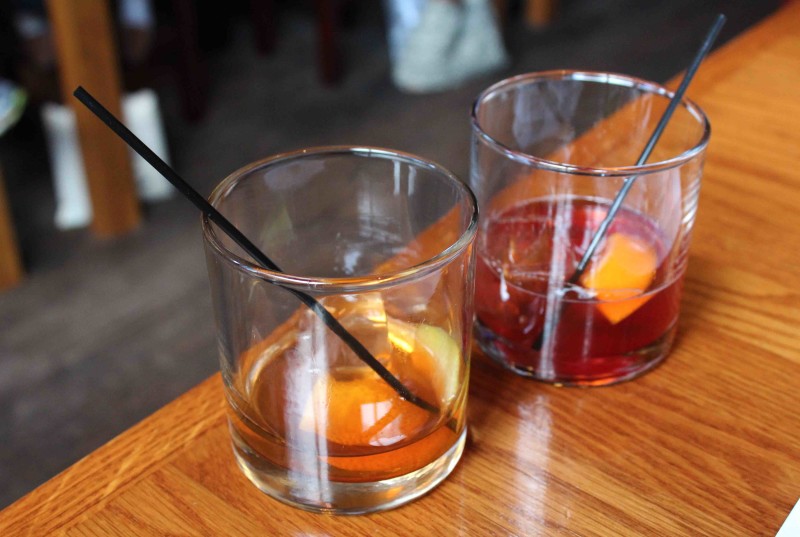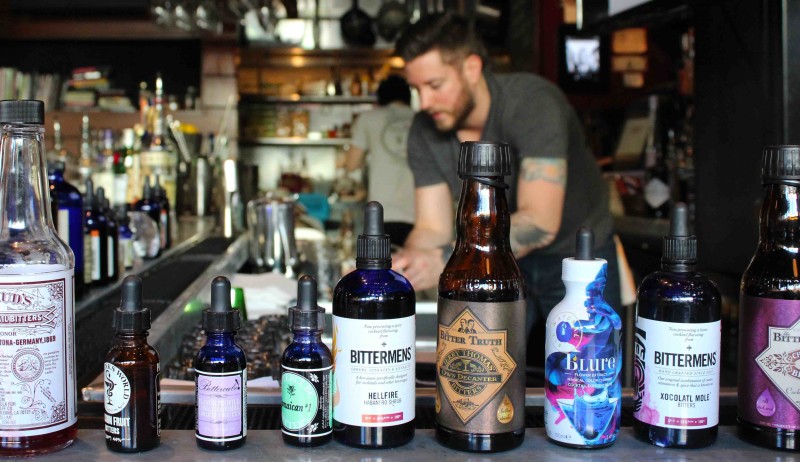


“We don’t like to be called mixologists,” says Scott. “I’m generalizing, but those who call themselves ‘mixologists’ often take themselves too seriously.” Scott Baird and Josh Harris are the founders of The Bon Vivants, nationally recognized experts of everything bar, mixology, and hospitality. Along with branding, design, and flavor consulting, they define thoughtful and sophisticated perfect cocktail programs for bars all over the country.
We recently sat down with Scott and Josh at the Charleston Wine and Food Festival. Over several cocktails at a local bar called Proof, they discussed the art of mixology and the key to crafting the perfect cocktail.
The most important rule of mixology, the rule that supersedes everything else, is that balance is everything. “All flavors are completely irrelevant if a drink is out of balance,” says Scott.
Typically, flavors that are going to make a drink either in or out of balance are:
“The core principle we’re always trying to strive for when we create cocktails is balance of these elements,” says Josh. That can come in three ingredients, or it can come in 20, but if a drink isn’t balanced, it’s not going to taste good.
“If you don’t enjoy a drink, it’s not the fault of your taste preferences; the flavor profile is probably out of whack,” he adds.

Mixology legend, Jerry Thomas, first taught us the definition of a cocktail—a combination of spirit, sugar, and bitters. Cocktails were created as a method of disguising poorly made spirits, like a horrific blend of gin made in a bathtub during prohibition.
However, the fourth ingredient people don’t often mention is water. By adding ice and shaking, you’re adding an ingredient. “When you shake a cocktail, you’re adding over an ounce of water. The same goes for putting drinks on the rocks—more water is added over the course of the time it takes to drink it,” Josh explains.
For Scott, mixing a cocktail is the same as cooking a piece of meat—add salt and it’ll be delicious, but if you rub it with chili oil and finish it with fresh lemon and salted onions on the side, it’s even better. “You’re layering flavor and enhancing the core ingredient.”
As with all good chefs, mixologists approach their product with complexity, but quickly realize that scaling it back to something simple usually tastes better. We’ve seen this retreat to more simple, classic drinks trending in bars all over the world. “People have gotten all that crazy out of their system. They’ve experienced it and they know a drink’s potential, and now it’s a tool they have; bartenders are more educated by virtue of their experience now that they’ve played with the flavors.”
“When I think of flavors,” says Scott, “I almost see them in colors, or think of them as masculine and feminine or treble and bass. The ultimate goal is to hit all the notes.”
Scott and Josh describe the tasting process of a great drink. “First, you taste the sweet and then you get some of the tart, and there’s savory in there and then the bitter comes along, and it’s a little dry and it leaves you wanting more. You just took this flavor ride. And it was fun. And it ended. But you can make it happen again.”
This is how The Bon Vivants envision cocktail development. Does a drink leave you wanting more? Is it highly craveable? “We don’t put drinks on our menu that we wouldn’t have at least two of,” Josh says.
He describes one of the first (and most controversial) drinks on their opening menu at Trick Dog, in San Francisco—a modernized Whiskey Sour. It was a combination of bourbon, combier, kummel, beet, ginger, and lemon. “Scott just barfed out a list of ingredients,” Josh remembers the conversation…
“It’ll taste delicious.”
“I don’t doubt that, but no one’s going to order it, and if you put it with bourbon we’re going to lose one of our bourbon drinks.”
And so they argued, but it eventually ended up on the menu.
In their first six months they sold 9,000.

Craig Nelson, owner of Proof, in Charleston, took inspiration from his southern grandparents to create one of Proof’s award-winning cocktails—The Knuckleball. It’s essentially a Manhattan, but it tastes completely different.
“We developed a Mexican Coca-Cola reduction, which comes out with an amaro or vermouth-style quality. We add bourbon, a splash of orange bitters, and—because the drink is a little on the sweet side—we pickle some peanuts and add a hot pickle brine.” The bourbon and bitters are followed by the rich flavor of peanut. It’s perfectly sweet and perfectly tart; it’s balanced.
There are some obvious steps to understanding what’s in balance and what’s not. “Either there’s too much of something or not enough of something, and if you ask yourself those questions, you’ll usually know what it is,” says Josh. As bartenders, we like to think all our drinks are balanced, but within that zone of balance there are going to be preferences that are slightly sweeter or slightly dryer.
Scott explains the difference between New York and San Francisco bartenders. “Generally, New Yorkers make more bitter and sweet drinks, and San Franciscans are known for mixing more dry and tart drinks.” New Yorkers supposedly pay more attention to the classics, which tend to have a little more viscosity and mouthfeel due to products like Chartreuse and Carpano Antica. In California, there’s an abundance of fresh produce and citrus, so their style comes from what’s referred to as the “California cocktail renaissance,” which was originally described as “the market-fresh cocktail.”
“We definitely see two distinct styles,” says Scott. “That’s not to say one is better than the other; they’re just different.”
Josh and Scott detail their four most important mixology ingredients to have in your bar inventory. “Any cocktail bar that fancies itself a cocktail bar will have at least three out of four of these on their menu. Most places will probably have four out of four.” These are sherry, tinctures, bitters, and amaro.
“We can’t make drinks anymore without using sherry. We love it,” says Josh. Sherry is one of those wines that can range from the saltiest, bone-dry flavor to something sweet you’d put on pancakes. “People describe it as nutty, but it also has this flavor that can be attributed to umami.”
However, there needs to be a lot of thought behind integrating sherry into a cocktail menu. “We use sherry as a sort of seasoning agent. It’s one of those things that you wouldn’t notice if it wasn’t on the menu, but it makes a huge difference to flavor…. It’s the MSG of the cocktail world.” (Only not as bad for you!)
A tincture is a maceration, or soaking, of an ingredient in an alcohol. Tinctures are created with the intention of dropping or dashing them into cocktails to give a layer of nuanced flavor. “Put some whiskey in a jar, add some cinnamon sticks to it, let it sit there, take the sticks out, and you have a cinnamon tincture,” says Josh. You can do this with whiskey, rum, vodka, gin, everclear, anything you want. But the point is to inject that flavor into a specific ingredient.
Scott and Josh prefer to macerate each element as a separate tincture. “Making individual tinctures gives you more flexibility to develop an arsenal of really interesting flavors,” says Scott. Plus, these elements extract flavor at different points, so if you put all the items into one jar of vodka, your black tea will over-steep and the cinnamon sticks will take too long. Macerating separately allows you to control things.

A bitter is a combination of multiple tinctures. Let’s say you have seven different tinctures: cinnamon, lemon, orange peel, gentian, rhubarb, lime peel, and roots. Some of them will be extremely bitter, some will be sweet, some will be floral, and they’ll be blended together at different ratios to make a bitters.
“In any mixology nerd’s catalogue, they’ll have the ability to create different flavored bitters with any combination of tinctures. A lime one, for example, will include several of those tinctures we just listed, like the roots and herbs, but you’ll probably add a lot of the lime peel tincture, and that’ll be the flavor that pops,” says Josh.
Amaro is basically bitters, in a slightly different package. Products like Amaro Montenegro, Campari, and Fernet are all just different versions of bitters. But rather than being dashing bitters, like Angostura, they’re drinking bitters—they’re lower proof, they have different flavors, and most of the time they have sugar added to make them more of a liqueur. “Depending on the brand, you’ll find different levels of sugar that create various amaro flavors,” Scott explains.
He talks about how these four elements work together as one big family. “Tinctures become bitters, and bitters are essentially very concentrated versions of amaro. And they all have different flavor profiles.” These days, we’re seeing these four products used more often in the industry. Bartenders are layering, building, mixing, and creating more homemade elements than ever before.
With the rise of more innovative craft products, as a bartender, it’s important to ask yourself this: When a guest walks into your bar, what’s their degree of comfort with what they see? Are they seeing things on your menu that might put them off? Do you think they feel comfortable asking you questions? Will they see things on your menu that are unfamiliar to them?
If it’s a good bar, the answer should be yes, they will. However, good bartenders earn the trust of their guests and encourage their customers to experience new things through them. It’s all about creating a comfortable space and serving up drinks that guests probably had no idea they would enjoy. “After all this effort, everything stops when we see guests tasting drinks they just love,” says Scott.
Need help creating more balanced cocktails in your bar? The Bon Vivants recommend purchasing The Flavor Bible (trust us, it’s a must-have for any kitchen or bar).
For more articles about the art of mixology and other industry news, head to our industry culture page.
Looking for some advice on running the ultimate cocktail bar? Get your free eBook here:

Schedule 15mins to chat with a product specialist
Start a FREE Trial Today! BevSpot offers full product education and account setup for all customers! No card Information needed!
